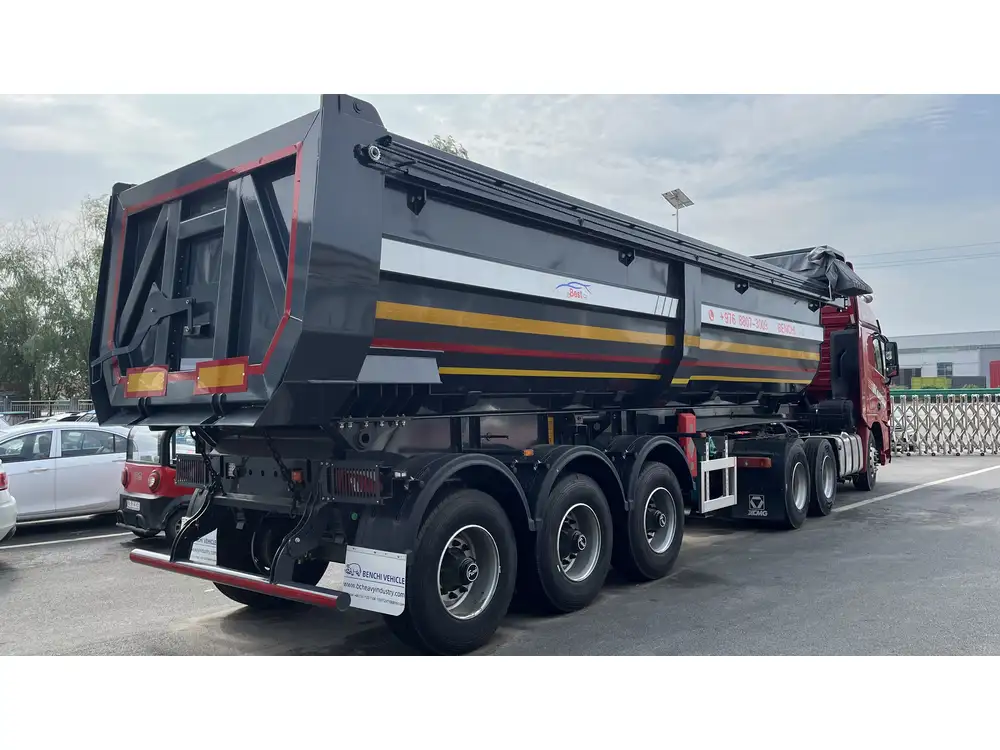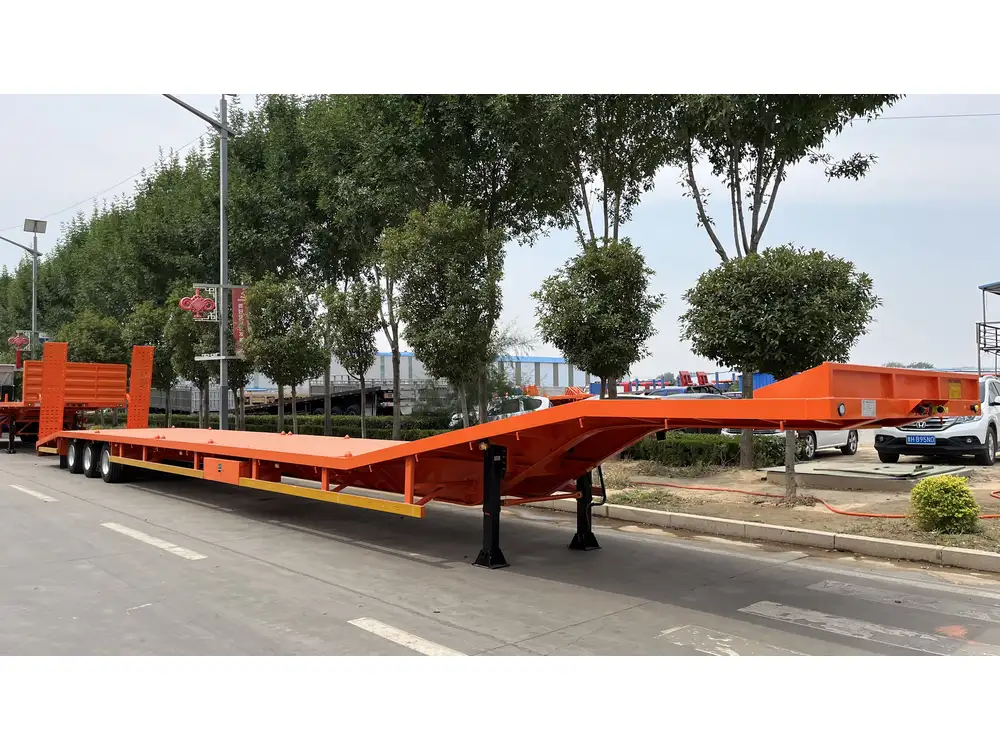Transport logistics plays a vital role in today’s economy, and semi-trailers are at the heart of this industry. As manufacturers, it is essential to understand the specifications associated with semi-trailers, especially regarding their width. Let’s dive deep into the topic of semi-trailer dimensions to provide clarity and insight for businesses, transporters, and logistics operators.
Semi-Trailer Dimensions: A Complex Landscape
The dimensions of semi-trailers vary significantly based on numerous factors, including application, regional regulations, and load type. Understanding what constitutes the maximum width for semi-trailers is crucial in maintaining compliance and optimizing operational efficiency.
General Specifications
Standard Widths: Among the various designs and types of semi-trailers, a common maximum width for most semi-trailers on U.S. roads is 8.5 feet (102 inches). This standard width is designed to ensure maneuverability and safety while providing ample space for cargo.
State Regulations: While 8.5 feet is a common maximum width, states may establish varying rules that could allow for wider trailers under specific conditions. These exceptions often apply to specialized loads, such as wide machinery or agricultural equipment.
| Aspect | Standard Width | Maximum Allowance | Comments |
|---|---|---|---|
| U.S. Regulations | 8.5 ft (102 in) | 10 to 12 ft | Special permits may be required |
| Canadian Regulations | 8.5 ft (102 in) | Up to 12.5 ft | Varies by province |
| EU Regulations | 2.55 m (100 in) | Up to 2.6 m (102.4 in) | Subject to country-specific laws |

Types of Semi-Trailers and Their Widths
Different semi-trailers serve varied industry needs, and thus may come with specific dimension allowances.
Flatbed Trailers: Widely used for transporting heavy equipment and oversized freight, they typically conform to the standard 8.5-foot width, but can be extended to 10 or even 12 feet with permits.
Reefer Trailers: Designed to carry temperature-sensitive goods, these trailers also adhere to the 8.5-foot width but need careful planning for compliance with weight and temperature regulations.
Enclosed Trailers: Offering protection from the elements, enclosed trailers aim for the standard 8.5-foot width. Depending on the design, some variations may exceed this width, given proper certification.
Container Chassis: Used for transporting shipping containers, these trailers align with the standard dimensions; however, they can extend broader at times, depending on cargo needs.
Trailer Type Standard Width Special Width Considerations Flatbed 8.5 ft Up to 12 ft with permits Reefer 8.5 ft Compliance to insulation load Enclosed 8.5 ft Depends on design Container Chassis 8.5 ft Container dimensions may vary
The Importance of Adhering to Width Regulations
Safety Considerations
Adhering to maximum width specifications is not merely a regulatory requirement; it is a safety imperative. Wider trailers can cause hazardous situations, especially during cornering, and can obstruct traffic significantly. Hence:
- High Speed Maneuvers: Wider trailers may sway or become less stable, increasing the risk of accidents.
- Obstacle Navigation: They make it challenging for operators to maneuver through tight spaces such as city streets or construction zones.

Economic Implications
Transport businesses must factor in width-related costs. For example, special permits for oversized loads can incur additional fees and may require escorts, increasing operational expenses. Moreover, height and width limits directly correlate with fuel consumption and overall efficiency:
| Factors | Impact on Business |
|---|---|
| Increased Fees | Permitting for wider trailers can become costly |
| Logistical Challenges | Transporting oversized loads may limit routing options, thus affecting delivery times |
| Fuel Efficiency | Wider trailers can lead to greater drag, impacting fuel consumption per mile |
Exploring Maximum Widths by Region
North America

United States
As mentioned earlier, the maximum allowable width for semi-trailers is usually 8.5 feet without a permit. However, multiple states have unique regulations accommodating special loads beyond this width:
- California: Allows oversized freight, typically not exceeding 10 to 12 ft with proper permits.
- Texas: Widely recognized for lenient laws regarding trailer dimensions, offers permits for widths extending to 14 ft when carrying specific heavy goods.
Canada
Canadian regulations are largely consistent with the U.S., with a maximum width set at 8.5 feet. However, provinces offer variances:
- Ontario: Similar allowances for wider loads as in the U.S., with permits granted based on commodities.
- British Columbia: Enforces stricter policies to enhance road safety while still accommodating specialized needs.
Europe
In the EU, the maximum width for semi-trailers is set at 2.55 meters (100 in) generally, but some countries allow extensions to 2.6 meters (102.4 in). Compliance with specific country regulations is necessary:
- Germany: Rigid width limitations to ensure road safety circulate discussions around increasing maximum width limits.
- France: Similar to their German counterparts, reinforcing width limits for general transport helps minimize risks of accidents.

Compliance Strategies for Transporters
Understanding Permits and Regulations
Transport businesses must be geared toward regulatory compliance to operate effectively:
- Research Local Regulations: Understanding the details ahead of transporting oversized loads, including paperwork processes.
- Utilize Technology: Employ software solutions that alert operators of state laws regarding semi-trailer dimensions.
- Stay Informed: Attend industry workshops or training to remain updated on changes to laws regarding widths.
Training and Guidelines for Operators
Implement guidelines on evaluating cargo dimensions and overall load management. This includes:
- Training exercises on safely navigating in various environments (tight roads, urban situations).
- Best Practices for communicating with dispatchers to manage loads that may require separate handling.

Conclusion
The knowledge surrounding the maximum width of semi-trailers is crucial within the transportation sector. Adhering to regulations not only ensures compliance but also promotes safety and efficiency. As manufacturers, staying informed about these regulations and adapting your products accordingly can enhance operational capacity and reliability in logistics. Understanding the nuances of regulations, the economic implications of width compliance, and developing comprehensive training strategies will empower businesses to thrive in a competitive industry landscape, paving the way for seamless logistics operations.
In navigating the complex web of semi-trailer regulations, education and proactive strategies lay the groundwork for success in transporting a multitude of goods, ensuring that loading and transport challenges are addressed with precision and expertise.



